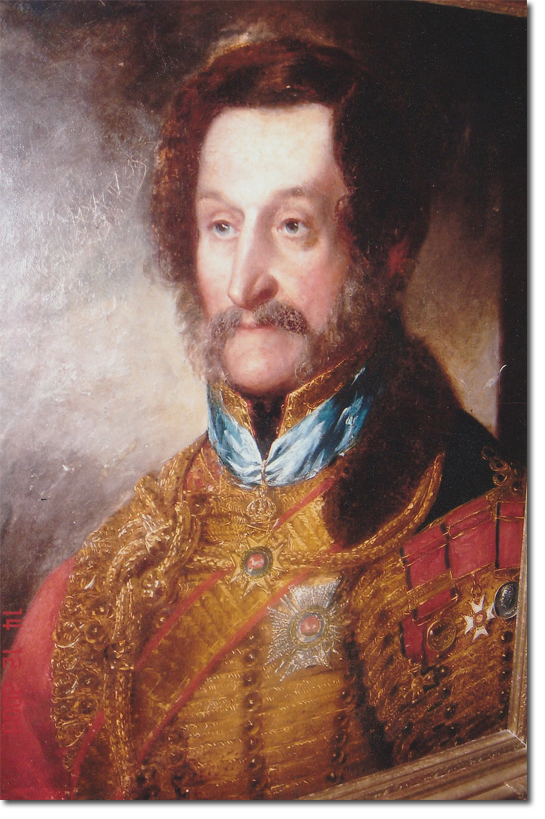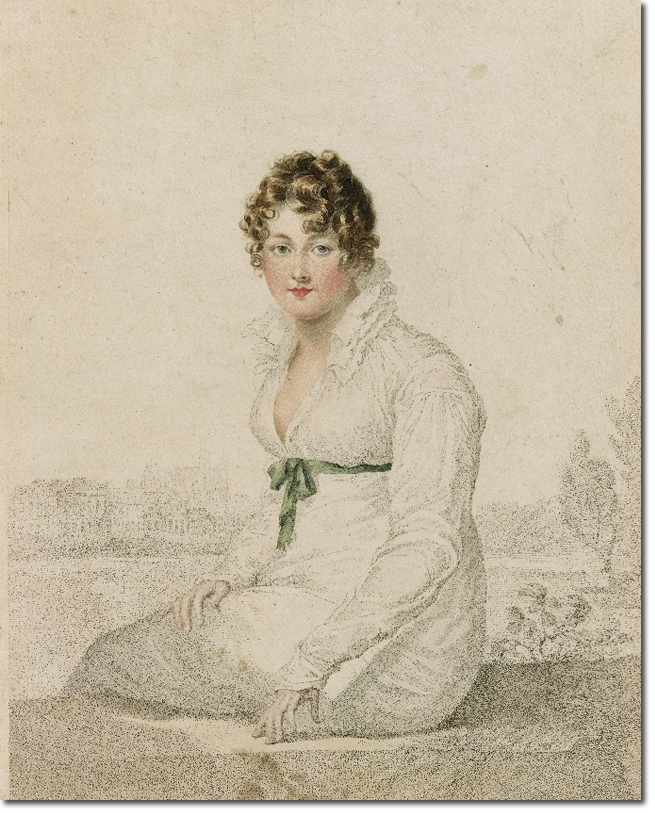|
|


|
|
George Augustus Quentin was a favourite of the Prince of Wales and was appointed his ADC from 1811 to 1825. Described as a tall, dry and somewhat humourless Hanoverian. He was already 33 when he joined the 10th Light Dragoons as a cornet in 1794. Acknowledged to have been ‘the most compleat horseman in Europe’, he was soon appointed as riding master to the 10th. Fifty years later Lord William Lennox recalled that Quentin ‘was the first to introduce the foreign cavalry seat’ into England and that he was particularly knowledgable on the subject of hussars, ‘He knew how the pelisse should be slung, and the proper cut of the hessian boot’. Thus he was instrumental in carrying out the Prince’s wish to develop hussars in the British army.
Quentin was born in 1760, the eldest son of a Göttingen merchant. He served for 7 years in the Hanoverian Garde du Corps before joining the British army. His promotion progressed from cornet to lieutenant on 1 Oct 1794, captain 17 May 1796, major 14 Feb 1805, and lieutenant-colonel on 13 Oct 1808. He was with the 10th in the Peninsular War from 11 Nov 1808, second in command of the regiment at Benevente and the retreat to Corunna. He was also in Spain under Wellington in 1813 and 1814, this time as CO from 1811. On 4 June 1814 he was given the brevet of colonel. At Waterloo in 1815 he was badly wounded, and created CB later that year. He was created Knight commander of the Royal Guelphic Order in 1821, titled Sir George Quentin CB KCH. He relinquished command of the regiment in March 1824 and reached the rank of lieutenant-general in 1838. In 1825 he was appointed Equerry to the Crown Stables by his patron King George IV. George Quentin became well known in 1814, when, following the regiment’s service in Spain and France he was accused by his officers of dereliction of duty and cowardice. He was generally referred to as 'the German officer'. A letter was drawn up and signed by most of the officers which resulted eventually, in Quentin’s court-martial. But the charges were not strong enough to have him removed from command of the 10th and in fact it was the officers who were removed. So in 1815 there was a wholesale change in the officers. The underlying problem was that Quentin had little respect for the aristocratic young gentlemen, and was more comfortable with the other ranks who held him in high regard. He was especially popular for his leniency as regards flogging. He died on 7 December 1851 at the age of 91. In 1811 he had married married Georgiana Lawrell who was painted by William Blake in 1820. It appears that she was unfaithful to her husband with his patron King George IV. Pamphleteers described her as Mrs Quentin or Mrs Q. They had a son also called George Augustus Quentin who also served in the 10th Hussars rising to the rank of Major. They also had a daughter Augusta Lawrell who married a captain in the 48th Regiment of the Madras Army. Below is a copy of William Blake's "Mrs Q" from 1822 (courtesy of The Morgan Library and Museum) The image above is provided courtesy of Guy Winters and his original painting is held in the Horsepower Museum in Winchester along with George Augustus Quentin's medals. In this painting he is wearing a red jacket which means he was a general at the time of the portrait. |

|
Regimental Details | Commanding Officers
Armed Forces | Art and Culture | Articles | Biographies | Colonies | Discussion | Glossary | Home | Library | Links | Map Room | Sources and Media | Science and Technology | Search | Student Zone | Timelines | TV & Film | Wargames